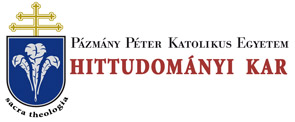Folia Theologica et Canonica 10. 32/24 (2021)
Ius canonicum
124 ALBERTO SORIA JIMENEZ, OSB is not one of granting an indult, but rather to provide, in effect, the 1962 edition of the Roman Missal for public use; that is, to satisfy a right, the exercise of which is required directly by a group of the faithful. From this stems the obligation to inform the hierarchical superiors when such a need cannot be provided for, as the legal mandate that everyone, each according to their personal responsibility, should “effectively guarantee and ensure the use of the forma extraordinaria for all who ask for it”, as UE n. 8 section b) states. In summary, this is not a dispensation or a privilege, but a right all the People of God have, even though the UE does not use those exact terms. As such a right, it can be exercised and demanded according to the general rule contained in c. 223 CIC. Within that framework, the right should be interpreted as expansively as possible, and the limitations of the same, always restrictively, in view of cc. 18 and 36 CIC. What is more, SP provides that any priest or group of the faithful who feel affected by the actions of their Ordinary can send a recourse to the Pontifical Commission Ecclesia Dei, which, according to what is provided for in UE n. 10 § 1, is the hierarchical superior for these matters, and the competent organism for the resolution of the same. IV. IV. The Theological Issue Regarding the Liturgical Reform All this being so, the Roman Missal and the rest of the liturgical books traditionally in use in 1962, are qualified in SP as extraordinary form within the unity of the Roman Rite. However, in the CIC terminology and the rest of canon law, the notion of ordinary and extraordinary do not carry per se any further connotations than those which the legislator may wish to attribute to the distinction in each case. In SP, the distinction applied to the only Roman Rite, which would therefore have those two forms, combines & factual criterion, i.e. the distinction between the amount of use of one or other form within the parish context, or in the pastoral care in general; and a canonical criterion, referring to the liturgical ruling in itself. However, by no means does the notion extraordinary form imply minimising or stigmatising the celebration of Holy Mass with the 1962 Roman Missal as being something secondary or exceptional. Even though he was aware that this decision could generate immediate criticism from many, Benedict XVI defines the relationship between the Roman Missals of St. John XXIII and St. Paul VI with his own formula: “They are in fact two usages of the one Roman Rite” (SP art. 1 §1). In this way he dispels the fear that the notion of “rite” may be understood herein in a profoundly canonical-ecclesiological sense, and also that the Priestly Fraternity of Saint Pius X itself could be established as a sui iuris Church for that reason. The said
